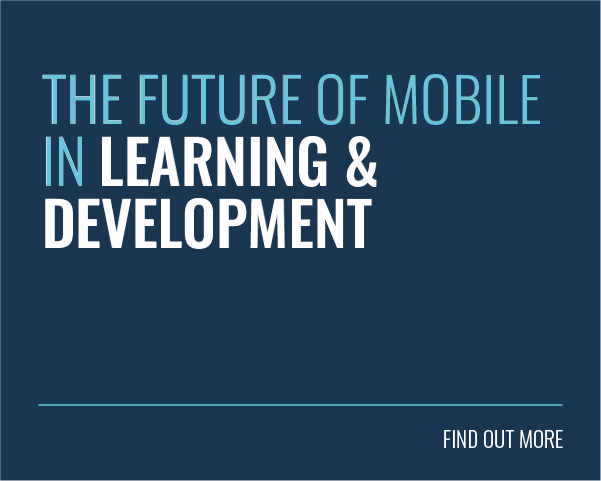 If you have a mobile learning initiative in place, or you’re looking to implement one, there’s something you should know: If you can’t engage your learners, it’s not going to have the desired impact.
If you have a mobile learning initiative in place, or you’re looking to implement one, there’s something you should know: If you can’t engage your learners, it’s not going to have the desired impact.
Not to worry, there are quite a few things you can do to generate enough activity to overload your server. The simplest thing you can do is to make your training more fun by creating an overarching game.
Competition is a huge driver for engagement. The first step is to decide on the form of your game. The mechanics don’t need to be complicated – you can set a time period, say three months. Within this three-month period, all users will complete challenges to earn points. The more challenges they complete, the more points they’ll earn and the higher up the leaderboard they go.
It’s a simple format that’s worked pretty well for hundreds of years, but before you start, there are a couple of things you should keep in mind:
Call it a Game
 As a training manager, you’re responsible for delivering a training programme that fulfils the organizational objectives. But guess what – nobody else cares about your responsibilities as a training manager.
As a training manager, you’re responsible for delivering a training programme that fulfils the organizational objectives. But guess what – nobody else cares about your responsibilities as a training manager.
If you call it a game, or a tournament, or a quest, it’ll have more meaning for the users at the ground level. After all, these are the people you need to engage. Do yourself a favour – stop thinking of it as a training programme. Think of it as a game, train your mind to perceive the programme… sorry, game… as you want your learners to.
You Need a Prize at the End
It might be something as simple as recognition on your learning platform or special status, but a tangible extrinsic reward might drive engagement further. You know your learners better than anyone, so you’ll have a good idea of what kind of reward would motivate them.
For example, if your learners are all booksellers, a book token would fit the bill. The prize doesn’t necessarily need to go to an individual – you can pit teams against each other, awarding an all-expenses-paid meal to the ultimate victor.
Think of your Points as Currency
If there’s a meaningful reward at the end of your game, every point will have importance. Think of it like a game of soccer. Each goal is worth one point. At half-time, your team is up by two goals. If the referee suddenly decided that goals are now worth 3 points each in the 2nd half, you won’t be too happy when the other side slips one past the goalie in the 89th minute.
The effort your team put in was clearly greater, yet an arbitrary choice gave the victory to the lesser team. The game completely loses meaning for you and you’ll be unlikely to play it again. If you want to keep your learners engaged, don’t let them feel cheated at any stage.
Let the Game Finish

Because you want to keep everything fair, it’s best not to change the rules of the game while it’s in play. However, you’ll probably need to fine-tune the mechanics to fit with the players’ behaviour.
This will be easier to accomplish if your games don’t run for long periods of time.
It’s also important to let the learners know when things have changed. You don’t necessarily have to go into mind-numbing detail about the maths behind everything.
A simple heads-up before each game recommences lets the players adjust their strategy.
Keep Everything Visible
As your learners work through the game, it’s important that other learners can see their progress. It’s no fun having more points if you can’t gloat about it in public. This has an impact on engagement, but increased visibility can also have other benefits.
As we’ll see in our Experts area below, your learners’ behaviour can identify them as experts in particular topics. With complete visibility, other learners can see who they need to ask if they’re confused about something.
Use the Camera
 For a successful mobile learning programme, your learners need to be able to accomplish each task quickly.
For a successful mobile learning programme, your learners need to be able to accomplish each task quickly.
Let’s say you want to challenge your learners to give an example of good customer service. It might turn into a ten-minute exercise if they need to type it up on their phone.
Instead, give them the option of recording a quick video. Since mobile technology has developed to the point where everyone has a camcorder in their pocket, it seems a shame not to exploit it!
Follow these pointers and your learning campaign is bound to succeed! Want to be certain of success?
Why not download our mobile learning initiative tip sheet! It will help you get your training off to the very best start!









